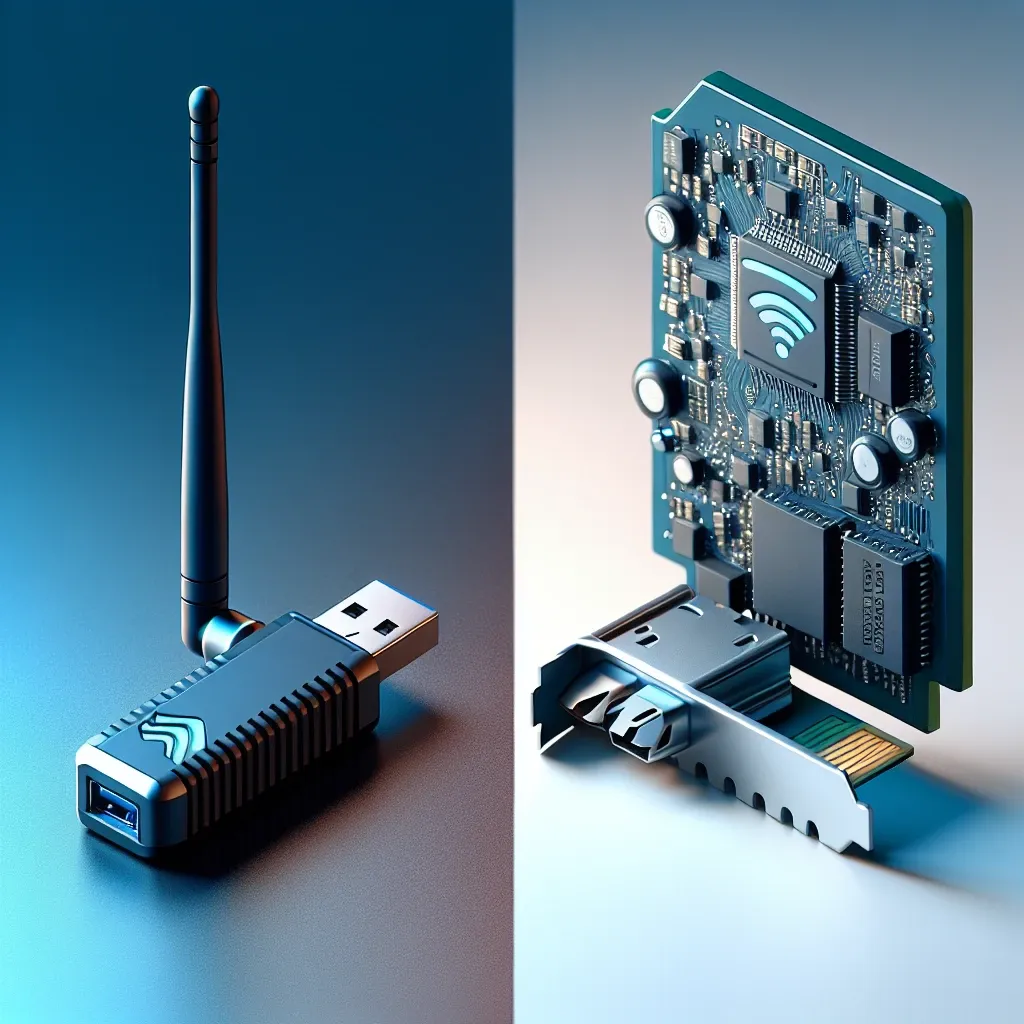Introduction
Advancements in wireless networking have led to the widespread use of WiFi adapters and WiFi cards. While both components are crucial for enabling wireless connectivity, they cater to different needs and usage scenarios. Understanding the fundamental differences between a WiFi adapter and a WiFi card can help you make an informed decision when upgrading or setting up your network.
WiFi Adapter vs. WiFi Card: Definition
| Feature | WiFi Adapter | WiFi Card |
|---|---|---|
| Definition | A WiFi adapter is a peripheral device that connects to your computer, usually via USB, to enable wireless connectivity. | A WiFi card is an internal device that is installed onto the motherboard to provide wireless network access. |
| Installation | Plug-and-play, typically requires a free USB port. | Internal installation, usually requires opening the computer case and occupying a PCIe slot. |
| Portability | Highly portable, easy to move between devices. | Fixed, not easily transferable between different systems. |
| Performance | Typically offers sufficient performance for basic tasks and portability. | Generally provides better performance and stability for high-demand activities. |
Closer Look at WiFi Adapters
Types of WiFi Adapters
- USB WiFi Adapters: The most common type, they connect to the computer via a USB port and are ideal for laptops and desktops lacking built-in WiFi.
- Micro USB WiFi Adapters: Smaller in size, these are perfect for laptops due to their minimal footprint.
- Ethernet-to-WiFi Adapters: Convert wired Ethernet connections into wireless, beneficial for devices without USB ports.
Advantages of WiFi Adapters
WiFi adapters are known for their convenience and ease of use. Their plug-and-play nature means they can be set up without extensive technical knowledge. Additionally, their compact size makes them perfect for portable devices like laptops.
Disadvantages of WiFi Adapters
On the downside, WiFi adapters may not offer the same level of performance, range, or stability as internal WiFi cards. They are also more prone to physical damage due to their exposed nature.
Closer Look at WiFi Cards
Types of WiFi Cards
- PCIe WiFi Cards: Installed in the PCIe slot of desktop motherboards, these cards often come with external antennas for enhanced signal strength.
- Mini PCIe and M.2 WiFi Cards: Common in laptops and slim desktops, they take up minimal space while providing robust performance.
Advantages of WiFi Cards
WiFi cards are renowned for their superior performance, making them ideal for gaming, streaming, and other high-bandwidth activities. Their internal setup means they are less likely to be physically damaged.
Disadvantages of WiFi Cards
The primary downside is the complexity of installation, which usually requires opening the computer case. This can be daunting for non-technical users. Moreover, their fixed nature makes them unsuitable for portable devices.
How to Choose Between a WiFi Adapter and a WiFi Card
Considerations
- Device Compatibility: Ensure that the chosen WiFi solution is compatible with your device, especially if you’re considering an internal WiFi card for a laptop or desktop.
- Performance Needs: Assess your primary activities. If high-speed internet for gaming or streaming is crucial, a WiFi card may be more appropriate.
- Ease of Installation: If you prefer a hassle-free setup, a WiFi adapter’s plug-and-play nature may be more appealing.
- Portability: For those frequently on the move, a USB WiFi adapter offers the flexibility to switch between devices easily.
Comparative Summary
| Scenario | Recommended Option |
|---|---|
| Gaming and High-Bandwidth Activities | WiFi Card |
| Laptop Use or Portability | WiFi Adapter |
| Quick and Simple Setup | WiFi Adapter |
| Permanent Desktop Setup | WiFi Card |
Popular Brands and Models
WiFi Adapters
- TP-Link TL-WN725N: Known for its compact size and reliable performance.
- Netgear Nighthawk AC1900: Offers high-speed performance suitable for gaming and streaming.
WiFi Cards
- ASUS PCE-AC88: Provides excellent range and speeds with its quad-antenna design.
- Intel Wireless-AC 9260: A mini PCIe card popular for its robust performance in laptops.
Conclusion
Both WiFi adapters and WiFi cards play essential roles in enabling wireless connectivity, but they cater to different needs and scenarios. A WiFi adapter offers unparalleled convenience and portability, while a WiFi card provides superior performance and stability. By understanding your requirements and the features of each device, you can make an informed decision that best suits your networking needs.

